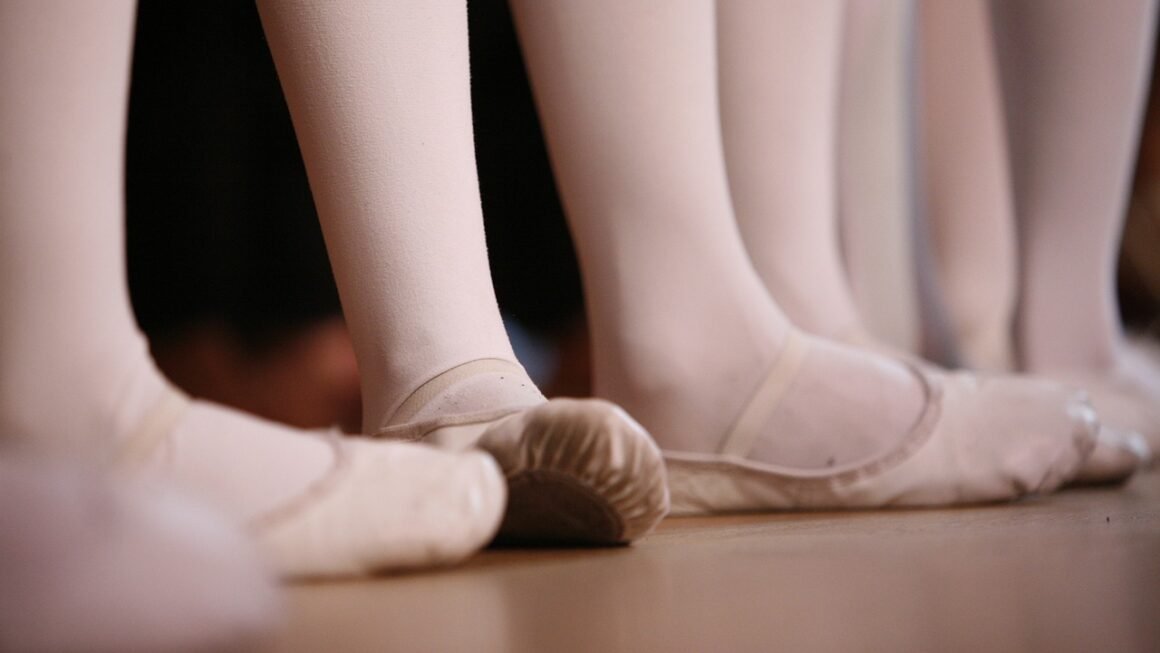Embark on a journey of self-discovery and physical prowess with Taekwondo, a Korean martial art renowned for its dynamic kicking techniques and emphasis on mental discipline. More than just a combat sport, Taekwondo offers a holistic approach to fitness, self-defense, and personal growth. Whether you’re a beginner looking for a new challenge or a seasoned athlete seeking to refine your skills, Taekwondo provides a rewarding path to physical and mental well-being. This comprehensive guide will explore the various facets of Taekwondo, from its rich history and fundamental techniques to its numerous benefits and how to get started.
The History and Philosophy of Taekwondo
Tracing its Roots: From Ancient Korea to Modern Sport
Taekwondo’s origins can be traced back to ancient Korean martial arts like Taekkyeon and Subak. These traditions were influenced by other East Asian martial arts and evolved over centuries. After World War II, various martial arts schools in Korea began to unify, leading to the formal establishment of Taekwondo in the 1950s. The name itself, “Tae” (foot), “Kwon” (fist), and “Do” (way), reflects the art’s focus on kicking and punching techniques, as well as the pursuit of personal development.
- Ancient Influences: Taekkyeon and Subak contributed to Taekwondo’s kicking techniques.
- Post-War Unification: Multiple martial arts schools coalesced to form Taekwondo.
- Modern Recognition: Taekwondo became an Olympic sport in 2000.
The Tenets of Taekwondo: A Guide to Ethical Conduct
Beyond its physical aspects, Taekwondo emphasizes a strong moral code based on five key tenets:
- Courtesy (Ye Ui): Showing respect and politeness to instructors, training partners, and others.
- Integrity (Yom Chi): Being honest with oneself and others, and adhering to moral principles.
- Perseverance (In Nae): Continuing to train and strive for improvement, even when faced with challenges.
- Self-Control (Guk Gi): Maintaining control of one’s emotions and actions, both inside and outside the dojang.
- Indomitable Spirit (Baekjul Boolgool): Having the courage to stand up for what is right, even in the face of adversity.
These tenets serve as a guiding compass for practitioners, fostering a sense of responsibility and ethical behavior. For example, applying “Courtesy” means bowing respectfully to your instructor and training partners before and after training. “Perseverance” is embodied by consistently attending classes and working on techniques that you find challenging.
Fundamental Techniques and Training
Stances: The Foundation of Movement
Proper stances are crucial for balance, power generation, and effective execution of techniques. Some fundamental stances include:
- Ap Seogi (Walking Stance): A basic stance used for forward movement and basic blocks.
- Ap Kubi (Forward Stance): A longer stance that provides a stable base for generating power in kicks and punches.
- Dwui Kubi (Back Stance): A stance used for defensive maneuvers and counter-attacks.
- Beom Seogi (Tiger Stance): Similar to back stance but with greater weight distribution on the back leg, used for agile movement.
Practice each stance diligently, focusing on proper alignment and weight distribution. For example, when practicing Ap Kubi, ensure your front knee is directly above your ankle and your back leg is straight.
Blocks: Protecting Yourself from Attacks
Defensive techniques are essential for protecting yourself in a sparring or self-defense situation. Key blocks include:
- Are Maki (Low Block): Defending against attacks to the lower body.
- Momtong Maki (Middle Block): Defending against attacks to the torso.
- Eolgul Maki (High Block): Defending against attacks to the head.
- Han Sonnal Maki (Knife Hand Block): A versatile block that can be used to defend against various attacks.
Focus on proper technique and timing when practicing blocks. Visualize an incoming attack and react accordingly. Try drills with a partner to improve your reaction time and blocking accuracy.
Kicks: The Signature of Taekwondo
Taekwondo is renowned for its dynamic kicking techniques. Some fundamental kicks include:
- Ap Chagi (Front Kick): A basic and versatile kick used for offense and defense.
- Dollyo Chagi (Roundhouse Kick): A powerful kick used to target the head or torso.
- Yop Chagi (Side Kick): A linear kick used to target the torso or legs.
- Dwui Chagi (Back Kick): A powerful kick delivered with the back leg, often used in sparring.
Practice your kicks with focus and precision. Use a punching bag or target to develop power and accuracy. Remember to maintain proper balance and control throughout the kick.
Punches and Hand Strikes: Enhancing Your Offense
While kicking is prominent, Taekwondo also incorporates punches and hand strikes for close-range combat. Basic punches include:
- Jireugi (Straight Punch): A fundamental punch used for direct attacks.
- Momtong Jireugi (Torso Punch): Straight punch targeting the torso.
- Eolgul Jireugi (Head Punch): Straight punch targeting the head.
Hand strikes include techniques like:
- Sonnal Chigi (Knife Hand Strike): Used to strike pressure points or vulnerable areas.
- Jumeok Chigi (Fist Strike): A closed fist strike.
Practice punching and striking techniques with proper form and power generation. Work on your footwork and body rotation to maximize the impact of your strikes.
The Benefits of Practicing Taekwondo
Physical Fitness: Building Strength, Endurance, and Flexibility
Taekwondo is a full-body workout that improves:
- Cardiovascular Health: Regular training improves heart health and endurance.
- Muscular Strength: Kicking and punching techniques build strength in the legs, arms, and core.
- Flexibility: Stretching and kicking drills improve flexibility and range of motion.
- Coordination and Balance: Complex movements and stances enhance coordination and balance.
A study published in the “Journal of Strength and Conditioning Research” found that Taekwondo training significantly improves muscular power and agility.
Mental Discipline: Enhancing Focus and Self-Esteem
Beyond the physical benefits, Taekwondo cultivates mental discipline and focus:
- Concentration: Learning and practicing techniques requires focus and attention to detail.
- Self-Confidence: Achieving goals and progressing through the ranks boosts self-esteem.
- Stress Relief: Physical activity and mental focus can reduce stress and anxiety.
- Respect and Discipline: Adhering to the tenets of Taekwondo fosters respect and discipline.
Consistent practice of Taekwondo has been shown to improve cognitive function and reduce symptoms of ADHD in children, according to research published in the “Journal of Pediatrics.”
Self-Defense Skills: Empowering You to Protect Yourself
Taekwondo equips you with practical self-defense skills:
- Effective Techniques: You learn powerful kicks, punches, and blocks for self-protection.
- Situational Awareness: Training enhances your awareness of your surroundings and potential threats.
- Confidence: Increased self-confidence makes you less likely to become a target.
- De-escalation: The tenets of Taekwondo encourage conflict resolution and de-escalation techniques.
While Taekwondo provides valuable self-defense skills, it’s crucial to remember that avoiding confrontation is always the best option. Self-defense techniques should only be used as a last resort.
Getting Started with Taekwondo
Finding a Qualified Instructor and School
- Credentials: Look for instructors with certified black belt ranking and experience.
- Reputation: Research the school’s reputation and read reviews from other students.
- Trial Classes: Take trial classes to see if the school and instructor are a good fit for you.
- Atmosphere: Observe the class atmosphere and ensure it is positive and supportive.
It’s also important to ask about the instructor’s teaching philosophy and the school’s curriculum. A good instructor will be patient, knowledgeable, and dedicated to helping you achieve your goals.
Essential Equipment and Gear
- Dobok (Uniform): The traditional Taekwondo uniform.
- Belt: Indicates your rank and progress.
- Protective Gear: Includes mouthguard, groin protector, shin guards, and chest protector (for sparring).
- Training Shoes: Optional for indoor training.
Invest in quality equipment to ensure your safety and comfort during training. Talk to your instructor for recommendations on specific brands and sizes.
What to Expect in Your First Class
- Warm-up: Stretching and light exercises to prepare your body for training.
- Basic Techniques: Introduction to stances, blocks, kicks, and punches.
- Drills: Practicing techniques with a partner or on a target.
- Cool-down: Stretching to improve flexibility and prevent injuries.
Be prepared to sweat and work hard. Don’t be afraid to ask questions and seek help from your instructor and classmates. Remember that everyone starts as a beginner, so be patient with yourself and enjoy the process of learning.
Conclusion
Taekwondo offers a wealth of benefits, from improved physical fitness and mental discipline to valuable self-defense skills. Its rich history and philosophical underpinnings provide a framework for personal growth and ethical conduct. Whether you’re seeking a new fitness challenge, a way to boost your confidence, or a path to self-discovery, Taekwondo can be a rewarding and transformative experience. Take the first step today and embark on your journey to mastery. With dedication and perseverance, you can unlock your full potential and achieve your goals in the world of Taekwondo.



